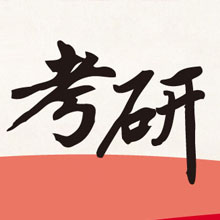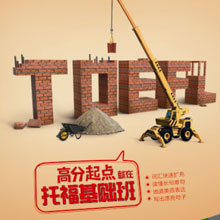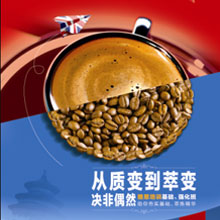新东方2016考研英语阅读题源经济学人文章:渔夫的好时代
2015-11-30 18:00 新东方
2016考研英语阅读题源经济学人文章:渔夫的好时代
The price of fish
鱼类的价格
Different scales
不同种类有不同情况
Fish are getting more expensive, but they do not allmove at the same speed
鱼类的价格一路走高,然而上升的幅度却各不相同。
Upwardly mobile
上浮的鱼
IT IS a good time to be a fisherman. The global fish-price index of the UN's Food andAgricultural Organisation (FAO) hit a record high in May. Changing consumer diets, particularly inChina, explain much of the sustained upward movement. High oil prices, which increase thecost of fishing and transportation, also add to the price of putting fish on the table.
这是个当渔夫的好时代。联合国粮农组织的全球鱼类价格指数在五月份创造了一个新的纪录。消费者们—尤其是中国的消费者们—饮食习惯的改变,是鱼价持续上涨的主要原因。此外,高昂的油价抬高了捕捞和运输成本,这些成本最后又被转嫁到了餐桌上。
Not all fish are created equal, however. There are two types of fish production: “capture” (orwild) and “aquaculture” (or farmed). And they seem to be on different trajectories. Fish such astuna, the majority of which is caught wild, saw much bigger price increases than salmon, whichare easier to farm. Overall, the FAO's price index for wild fish nearly doubled between 1990 and2012, whereas the one for farmed fish rose by only a fifth. What explains this big difference?
然而,鱼的种类有许多,价格也参差不齐。鱼的生产方式有两种:捕捞野生鱼和养殖家鱼。两者的价格趋势不尽相同。相比如三文鱼那样容易养殖的鱼种,金枪鱼这些主要依靠捕捞的鱼种的价格增长就要大得多。 从1990年到2012年,联合国粮农组织的野生鱼类价格指数翻了一番,但家鱼的价格指数只增长了五分之一。这种差别来自哪里呢?
The amount of wild fish captured globally has barely changed in the past two decades. Theceiling, of about 90m tonnes a year, seems to have been reached at the end of the 1980s.Overfishing is one reason, as is the limited room for productivity growth, particularly ifconsumers want high quality.
全球野生鱼类的捕捞数量在过去二十年中几乎没有变化。在20世纪80年代末期,就已经达到了9千万吨的极限值。过渡捕捞是一个原因,另一个原因是产率增长的空间有限,尤其是在消费者对质量有很高要求的情况下。
Patrice Guillotreau of the University of Nantes tells the story of a fleet in France that decided totrawl, rather than line-catch, its tuna. It brought more back to shore, but the fish weredamaged. It could not be sold as high-value fillets and was only good for canning. The old waysof catching fish are still best if you want the highest profits, says Mr Guillotreau.
南斯大学的Patrice Guillotreau讲了这么一件事。法国的一个捕捞队用拖网而不是钓绳垂钓的方式来捕捞金枪鱼。这确实使产量增加了,但鱼也受到了破坏,从而无法做成能卖出高价的条状鱼片而只能用来制作罐头。Guillotreau说,想要保证鱼能卖出最好的价钱,用传统的方式来抓鱼仍然是最好的选择。
In contrast, the farmed-fish industry continues to make productivity improvements. Fishfarms have found crafty ways to use lower quantities of fishmeal as feed. In the early days ofaquaculture, it could take up to ten pounds of wild fish to produce one pound of salmon. Nowthe number is down to five. That may still be an inefficient use of protein, but the ratio is setto improve further. Fish farms have also become more energy-efficient, meaning that they areless affected by higher energy prices. And they have learned how to handle diseases better,reducing the quantity of fish that ends up being unsellable.
与之相反,家鱼的产量却不断提高。鱼养殖场已经找到了节省鱼饲料的窍门。在水产养殖业开展的初期,生产一磅大马哈鱼需要多达10磅的野鱼当饲料。现在这个数字已经减少到了5磅。这样养鱼似乎仍然不是高效地利用蛋白质,但这个比率还有进步的空间。现代的养殖场还十分节约能源,这减轻了能源价格上涨带来的影响。而且他们学会了怎么控制鱼类的疾病,从而减少了最后无法卖出的鱼的数量。
As a result of all these improvements, the global production of farmed fish, measured intonnes, now exceeds the production of beef. Output is likely to continue growing: the FAOestimates that by 2020 it will reach six times its 1990 level.
所有这些进步使得全球家鱼的产量如果以吨计算的话,已经超过了牛肉的产量,而且还将继续增长:据联合国粮农组织估计,这一数字将在2020年时达到1990年的六倍。
This growth will further shake up the markets for fish. The farmed kind is expected todominate the market for medium-value produce. Suppliers of wild fish, for their part, mustslither into niche markets. At the low-value end wild sardine is a crucial input for farmed fishand is in abundant supply. More than a third of the total marine catch in 2010 was used forthe production of fishmeal and fish oil.
这样的增长还将造成鱼市的重组。家鱼将作为普通商品占据主要的市场份额。而野鱼供应商则逐渐占据高价市场。在市场的低价这一头,则是野生沙丁鱼。沙丁鱼产量巨大,而且是家鱼的一种主要饲料。2010年海洋捕捞总数的1/3以上都被用来制作鱼饲料和鱼油。
But more money may be made serving the captains of industry rather than industry itself.Sapmer, a French fishing company, recently discontinued its canned-tuna production, insteadconcentrating on catching tuna for sushi and sashimi for the top end of the market.
然而,服务其他行业的巨头们似乎能比从事该行业本身得到更多的利益。法国渔业公司Sapmer最近就关闭了它的金枪鱼罐头生产线,转而专心于捕捞金枪鱼来为终端市场的寿司和生鱼片提供原材料。
Frank Asche of the University of Stavanger, who helped to devise the FAO fish-price index,sees parallels with the divergence between farmed meat and wild game. As the supply of wildfish declines relative to farmed fish, it will become a luxury commodity, he explains. “In 20years' time people will think of wild fish like we now think of venison.”
斯塔万格大学的Frank Asche曾参与了联合国粮农组织鱼价指数的设计。他认为家鱼和野鱼的区别同饲养得到的肉类和狩猎捕获的野味的区别类似。随着野鱼的数量和家鱼相比逐年减少,它将成为一种昂贵的商品,他解释说,“20年内”人们就会像如今怀念山珍野味那样怀念野鱼的味道。
编辑:张雨
联系我们
版权及免责声明
① 凡本网注明“稿件来源:新东方”的所有文字、图片和音视频稿件,版权均属新东方教育科技集团(含本网和新东方网)所有,任何媒体、网站或个人未经本网协议授权不得转载、链接、转贴或以其他任何方式复制、发表。已经本网协议授权的媒体、网站,在下载使用时必须注明“稿件来源:新东方”,违者本网将依法追究法律责任。
② 本网未注明“稿件来源:新东方”的文/图等稿件均为转载稿,本网转载仅基于传递更多信息之目的,并不意味着赞同转载稿的观点或证实其内容的真实性。如其他媒体、网站或个人从本网下载使用,必须保留本网注明的“稿件来源”,并自负版权等法律责任。如擅自篡改为“稿件来源:新东方”,本网将依法追究法律责任。
③ 如本网转载稿涉及版权等问题,请作者见稿后在两周内速来电与新东方网联系,电话:400-0551-888。



